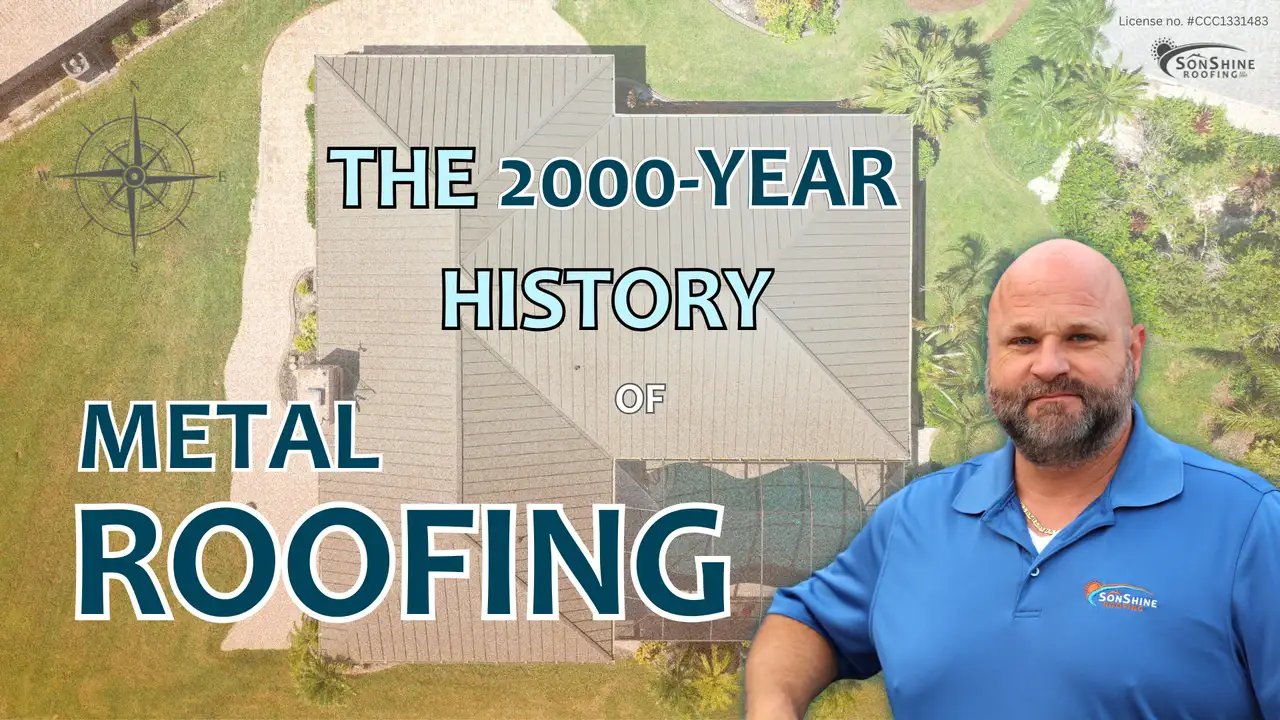Hurricane Roofing Damage: How to Prepare, Spot, and Prevent It
It’s hurricane season in Sarasota—and if you live along Florida’s Gulf Coast, your roof could be at serious risk. Wind, rain, hail, and debris can cause costly hurricane roofing damage that threatens your home’s safety and value.
Don’t wait for the next storm to strike. Here’s everything you need to know about the common types of damage hurricanes cause, how to inspect your roof safely, and how to prevent damage in the first place.
1. Common Types of Hurricane Roof Damage
Wind Damage
Hurricane-force winds can splinter wood shingles, crack asphalt shingles, and lift tiles. Once shingles or tiles are compromised, wind can rip them completely off, leaving your roof deck exposed and vulnerable to leaks.
Water Damage
When wind lifts roofing materials, rainwater finds its way in. Wooden shingles can weaken and fall. Asphalt cracks allow moisture in, and lifted tiles can expose underlayment. Always inspect your attic after a storm for any signs of moisture intrusion.
Hail Damage
Some hurricanes bring hail, which causes dimpling on shingles and cracked or shattered roof tiles. Even minor hail damage can reduce the integrity and lifespan of your roof.
Structural Damage
Flying debris and falling trees can cause severe structural damage. While some damage may be obvious (like a branch through the roof), other structural issues may not appear until it’s unsafe—so leave inspections to the pros.
2. How to Inspect Your Roof After a Hurricane
Check for Leaks and Water Stains
Start in your attic. Use a bright LED flashlight to look for dark stains, moisture, or mold around rafters, valleys, vents, and ceiling corners. These are telltale signs of leaks caused by roof failure.
Inspect from the Ground
Walk the perimeter of your home and look for shingles, tiles, flashing, or chimney caps on the ground. Debris and roofing materials scattered around your yard often point to damage above.
Avoid Getting on the Roof
Do not climb onto your roof. Post-storm roofs can be unstable and slippery. Instead, use binoculars or a ladder to inspect from the edge. If you suspect serious issues, contact a professional roofer for a full evaluation.
3. How to Prevent Roof Damage Before a Storm
Inspect, Secure, and Seal
Before hurricane season ramps up, schedule a professional roof inspection. Replace loose shingles, seal exposed seams with waterproof tape, and repair damaged flashing or underlayment.
Trim Nearby Trees
Hurricanes turn nearby trees into wrecking balls. Trim limbs that hang over your home, and remove weak or dead trees entirely. This is a simple way to reduce the chance of structural damage.
Install Roof Straps
Florida building codes require some coastal homes to install metal roof straps, which help secure the roof to the structure during high winds. If your home doesn’t have them, talk to a local roofing contractor about installing this added layer of protection.
Be Prepared for Hurricane Roofing Damage
Storm damage is unpredictable—but a strong, well-maintained roof is your first line of defense. Knowing how to spot problems early and prevent common issues can save you thousands of dollars in repairs and protect your home and family.
Need help getting your roof ready for the next hurricane? SonShine Roofing has over 38 years of experience serving Sarasota, Manatee, and Charlotte counties. Schedule a pre-storm inspection with our expert team today.













